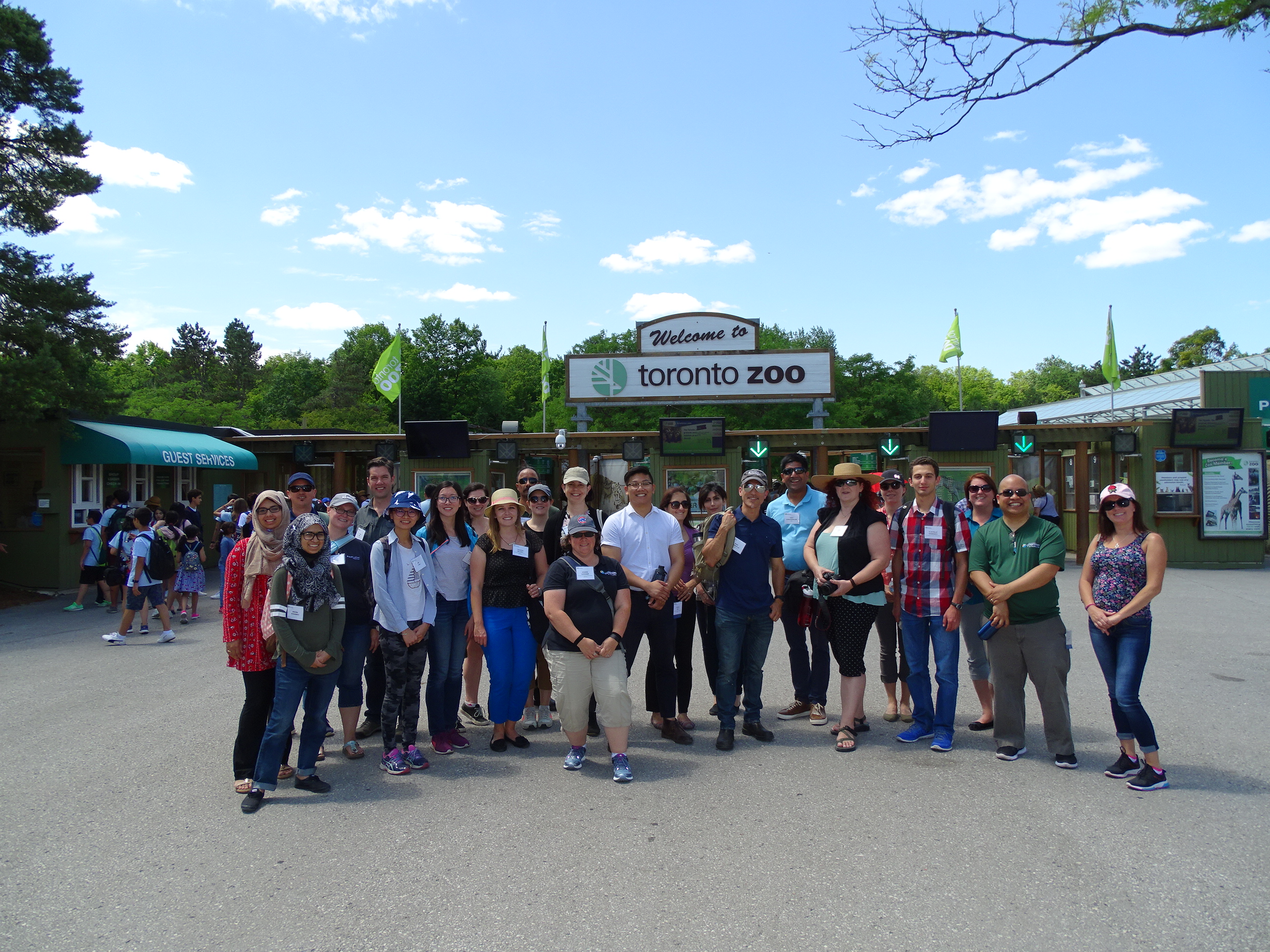Community Access permissions are required to access this content.
Recently, Partners in Project Green had the privilege of being part of a tour showcasing the Toronto Zoo’s many sustainability features. The Toronto Zoo has demonstrated leadership in environmental actions which can positively influence staff, visitors and stakeholders related to sustainable behavior.
Building Design
The new Wildlife Health Centre was constructed while keeping sustainable features in mind. The building meets Tier 2 of the City of Toronto Green Building Standards and includes features such as an expansive green roof, cooling features to reduce urban heat island effect, and bird friendly glazing on all windows.

Figure 1:Green roof on the Wildlife Healthcare Centre
Energy
The Caribou Café’s air conditioning is provided by “ice energy” which uses off-peak electricity overnight to make a large block of ice. During the day, the ice slowly melts and is used to create air conditioning that is piped into the building while visitors and staff are inside. This helps reduce electricity demand during peak hours of the day.

Figure 2: Ice Energy unit providing air conditioning to the Caribou Cafe
On the roof of the Administrative Support Centre, 50 solar thermal panels are installed providing the hot water supply in the building. As staff members need to take showers on site to prevent the spread of disease and contamination after handling wildlife species, the demand for hot water is high. Solar panels are also found above the polar bear exhibit.

Figure 3: Solar panels providing hot water to the Administrative Support Centre

Figure 4: Solar panels above the polar bear exhibit
The ring-tailed lemurs are housed in an enclosure where heating and cooling is provided by geothermal energy year-round. Geothermal energy uses the earth’s energy to help warm or cool an area and this system is the most efficient of all renewable energy sources.

Figure 5: Ring-tailed lemur housed in an enclosure receiving geothermal heating and cooling energy
An exciting initiative coming to the zoo is the construction of a biogas facility which will convert zoo waste from animals and food waste from local grocery stores into electricity, heat and fertilizer. This facility will end up producing a third of the Zoo’s electricity and will be Canada’s first zoo-biogas plant.
Water
Staff and volunteer efforts have resulted in a 63% reduction in water usage below 1990 levels since 2011 throughout operations. As a past winner of PPG’s People Power Challenge, the Zoo was able to install a rain harvesting system to provide water for the greenhouses.
Waste
For staff and volunteers, the Zoo has set up multiple waste streams to divert various materials from landfill such as Brita water filters, ink cartridges, batteries, and cereal bags. Cell phone recycling is provided as part of the Phone Apes program found in the gorilla exhibit.
 Figure 6: Waste streams for diversion of materials
Figure 6: Waste streams for diversion of materials

Figure 7: Phone Apes cell phone recycling program
The Zoo has also implemented many changes within the food and retail areas including installing water bottle refill stations, offering biodegradable plastic cutlery and selling t-shirts made of recycled plastic bottles.
The Washed Ashore exhibit is on display until November showcasing sculptures made of plastic pollution found in our oceans. The Zoo has also designed and created their own sculpture of a polar bear which is built with plastic waste found from local shoreline cleanups, the Zoo’s facility and community organizations.

Figure 8: Washed Ashore display with plastic waste pulled from the ocean

Figure 9:Washed Ashore polar bear sculpture with plastic waste pulled from local areas

